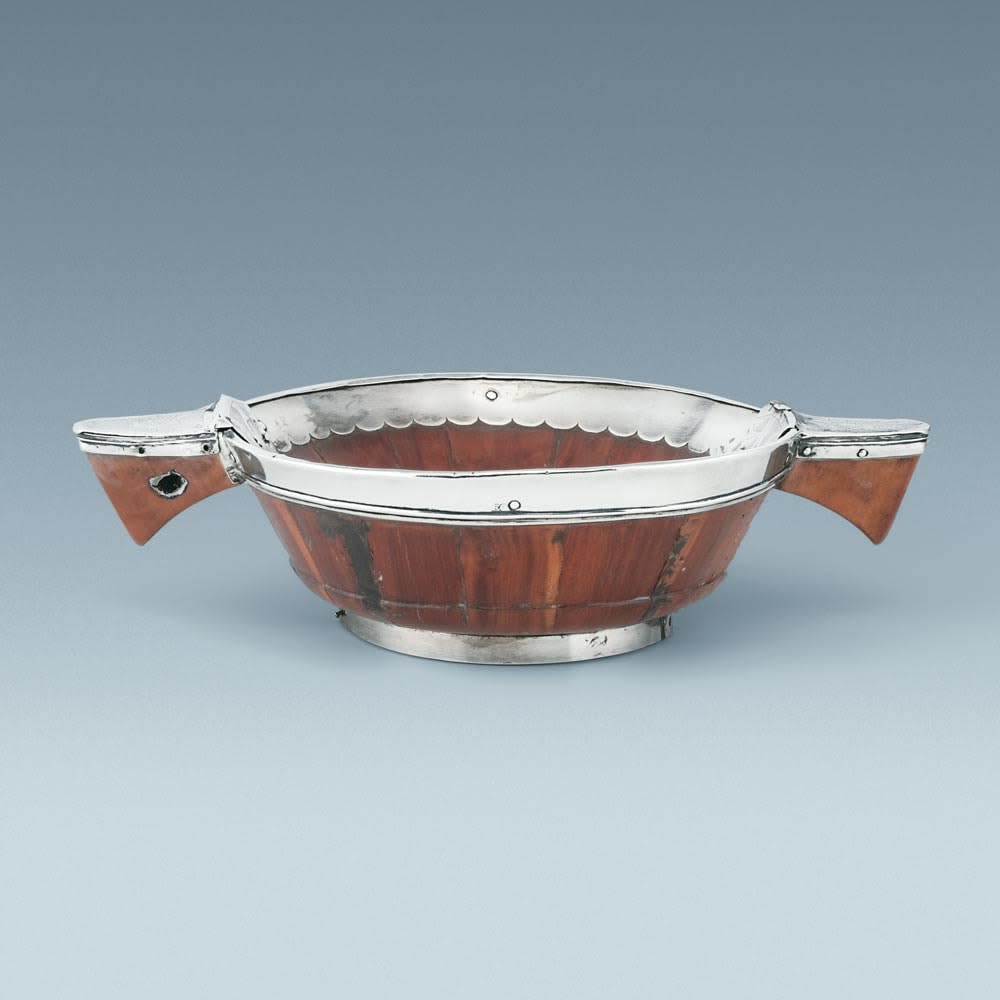





John Falconer
Scottish Silver Mounted Wood Quaich, c. 1690
Width: 10 3/4"
H0798
Sold
Further images
This quaich is a good example of 1690s style. The maker's mark IF may be that of John Falconer of Glasgow (earliest mention 1709). The maker's mark ED on the...
This quaich is a good example of 1690s style. The maker's mark IF may be that of John Falconer of Glasgow (earliest mention 1709). The maker's mark ED on the rim has so far not been identified; stylistically the rim dates to c. 1750.
A similar quaich was sold at Toovey's West Sussex in the "Polly de Courcy-Ireland Treen Collection", 20 September 2006, lot 500. That example, now in the National Museum of Scotland, is often attributed to the very rare and early Inverness maker Alexander Fraser, c. 1680. It has similar construction and lug application, and the design and attachment of the central boss is virtually identical. Also the placement of the makers' marks on the boss, right where the pins would go, is strikingly similar.
Lieutenant James McIntosh served in His Majesty's 63rd regiment which was raised in 1799 and sent to Holland to fight along side Russian allies against the French. Near Egmont Binnen the Russian troops were captured in an exposed position; McIntosh was killed in the hard fighting to free them. That night the Duke of York and his generals decided to withdraw, having lost 10,000 men.
Provenance:
Lieutenant James Mackintosh (d. 1799), thence by descent
sold Sotheby's Scottish and Sporting Paintings, Drawings, Watercolors and Scottish Silver, Hopetoun House, 26 April 1988, lot 44 (illustrated)
Private Scottish Collection
A similar quaich was sold at Toovey's West Sussex in the "Polly de Courcy-Ireland Treen Collection", 20 September 2006, lot 500. That example, now in the National Museum of Scotland, is often attributed to the very rare and early Inverness maker Alexander Fraser, c. 1680. It has similar construction and lug application, and the design and attachment of the central boss is virtually identical. Also the placement of the makers' marks on the boss, right where the pins would go, is strikingly similar.
Lieutenant James McIntosh served in His Majesty's 63rd regiment which was raised in 1799 and sent to Holland to fight along side Russian allies against the French. Near Egmont Binnen the Russian troops were captured in an exposed position; McIntosh was killed in the hard fighting to free them. That night the Duke of York and his generals decided to withdraw, having lost 10,000 men.
Provenance:
Lieutenant James Mackintosh (d. 1799), thence by descent
sold Sotheby's Scottish and Sporting Paintings, Drawings, Watercolors and Scottish Silver, Hopetoun House, 26 April 1988, lot 44 (illustrated)
Private Scottish Collection





